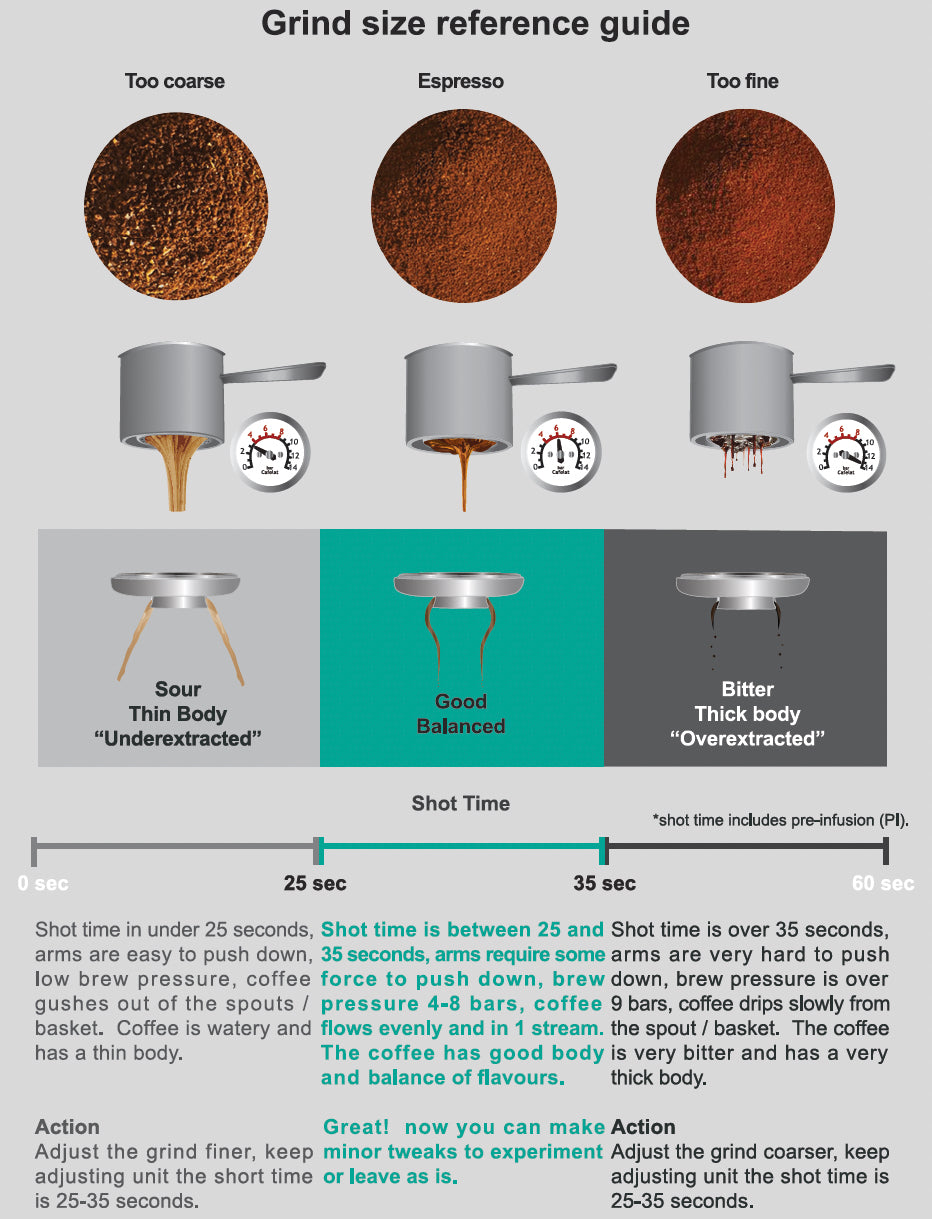As a home barista, learning how to properly time your espresso extraction can significantly enhance your coffee experience. The magic of espresso lies in finding the right balance between timing, grind size, and flow rate. When I first began my journey with espresso, I found this balance challenging, but once I understood the fundamentals, it became an incredibly rewarding pursuit. Dive into the features and performance in our DeLonghi Magnifica Evo review
Why Timing Matters in Espresso Extraction
Timing is a critical component of achieving a consistent and flavorful espresso. It directly impacts how much flavor is drawn out from the coffee grounds. A shot that extracts too quickly leads to under-extraction, characterized by sourness and sharp notes that lack depth. On the flip side, a shot that extracts too slowly often results in bitterness and an unpleasant aftertaste, hallmarks of over-extraction. Learn why this classic model stands out in our DeLonghi Magnifica S review

Techniques for Timing Espresso Extraction
From my experience, there are two main approaches to timing espresso extraction. Some baristas start the timer as soon as the pump is activated, while others wait for the first drip of espresso to appear. Personally, I prefer to start timing from the moment I press the espresso button. This method includes the pre-infusion phase and helps maintain consistency from shot to shot. Discover the convenience and technology in our Philips LatteGo 5400 review
Determining the Ideal Extraction Time
The ideal extraction time usually falls between 25 to 35 seconds. Through trial and error, I’ve found that aiming for around 30 seconds often results in a well-rounded shot. When extraction takes less than 25 seconds, it typically produces a weak and sour espresso, indicating under-extraction. On the other hand, an extraction lasting more than 35 seconds suggests over-extraction, resulting in a bitter taste. Explore the compact design and features in our Philips 3200 LatteGo review
Adjusting Grind Size to Perfect Your Timing
The timing of your espresso is heavily influenced by the grind size. A finer grind slows down the extraction, while a coarser grind speeds it up. If your shot extracts too quickly (under 25 seconds), it could mean the grind is too coarse. Conversely, if extraction takes longer than 35 seconds, the grind might be too fine. After several experiments, I discovered the grind size that works best for my espresso machine, dramatically improving the overall quality of my shots. Get all the details on versatility and functionality in our Philips 4300 LatteGo review
Let Flavor Be Your Guide
Although timing is crucial, always let the flavor be your primary guide. A well-balanced espresso should exhibit a pleasing mix of sweetness, acidity, and body. If your shot tastes sour or lacks depth, it’s likely under-extracted; adjusting to a finer grind or modifying the brew ratio could help. On the other hand, a bitter and dry shot suggests over-extraction, which may call for a coarser grind or shorter extraction time.
Overcoming Common Challenges in Espresso Extraction
Here are some common problems I’ve encountered, along with their solutions:
Under-extraction: If the shot finishes in under 25 seconds and has a sour flavor, the grind is likely too coarse. Try making it finer and pull the shot again.
Over-extraction: If the shot takes more than 35 seconds and tastes overly bitter, the grind is probably too fine. Switch to a coarser grind to help balance the flavors.
The Impact of Pre-Infusion on Timing
Pre-infusion can greatly affect the total extraction time. Many premium espresso machines offer a pre-infusion setting, which allows water to saturate the coffee grounds before full pressure is applied. Including pre-infusion in your timing process can yield a more even extraction. If your machine lacks an automatic pre-infusion feature, you can simulate this by briefly starting and stopping the pump manually.
Fine-Tuning Flavor with Brew Ratios
Another crucial aspect of espresso extraction is the brew ratio, which refers to the ratio of ground coffee to the final volume of liquid espresso. A typical starting point is a 1:2 ratio, like 18 grams of coffee to yield 36 grams of espresso. Adjusting this ratio based on the type of coffee can highlight different flavor notes.
For lighter roasts, a longer extraction or a lower brew ratio (such as 1:2.5) can bring out fruity and bright characteristics. For darker roasts, sticking with the standard 1:2 ratio can help reduce bitterness while preserving body and richness.
Relying on Sensory Evaluation
Ultimately, tasting and evaluating your espresso is the most important step. Timing provides a helpful framework, but the true measure of success is in the flavor. I’ve pulled shots that were perfectly timed but didn’t taste right due to inconsistencies in grind size or brew ratio. Experimenting with these variables has improved my ability to consistently make exceptional shots.
Conclusion: The Journey to Espresso Mastery
Mastering espresso extraction takes practice, patience, and attention to detail. By focusing on key elements like timing, grind size, and flavor, you’ll soon be pulling shots that could rival those from your favorite café. Embrace the process, experiment freely, and trust your taste buds to guide you toward creating consistently outstanding espresso.
